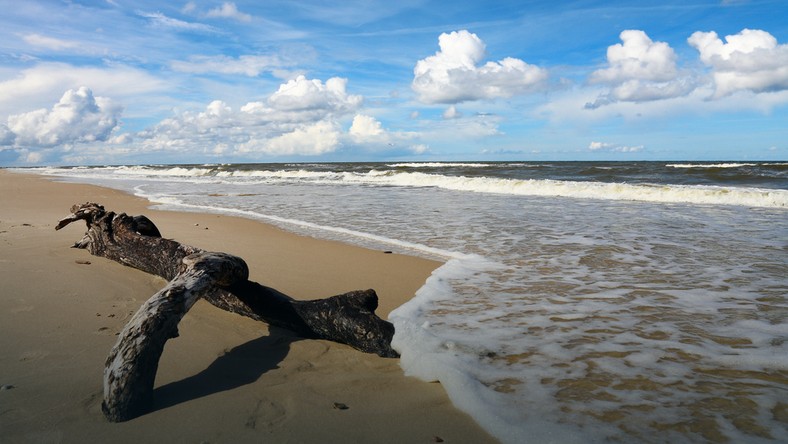
Photo: Shutterstock
Baltic
– Work is devoted to contemporary issues of changes climate and its impact on the Baltic and neighboring countries. It moves all the scientific issues in this field. It is the source of latest and proven research and the list of literature, which should be a guideline for spatial planning and environmental management and the Baltic Sea coast. The authors are researchers from the Baltic countries. This large project is the second installment – said Tomasz Łabuz from the Department of Earth Sciences at the University of Szczecin, engaged in the creation of the report.
The report takes into account climate change in the Baltic region observed from approx. two hundred years, as well as the changes that may take place by the end of the twenty-first century. (projections come from computer modeling).
According to the study’s authors should expect an increase in air temperature, although it will vary depending on the season and the region. The most drastic warming observed so far in the northern part of the Baltic Sea region. In the years 1871-2011 there spring grew warmer by an average of 1.5 deg. C. That’s more than the increase they are talking about global estimate (described in the recent report of the Intergovernmental Panel. Climate Change, IPCC), of at most 1 st. C.
Until the end of the century, air temperatures in the Baltic region could increase by about 4-8 deg. C winter and approx. 1.5-4 deg. C in summer (results differ depending on how the computer model is used).
Water surface temperatures could rise by approx. 2 deg. C throughout the Baltic Sea and in the northern part – of up to 4 ° C. – According to the simulation.
Such easing climate may mean that winter ice cover of the Baltic Sea will be 50-80 per cent. less than today.
is also expected overall increase in rainfall, especially in winter. Simultaneously, on the southern shores of the Baltic Sea in the summer rain is less, up to 40 percent.
The water level in Baltic will increase almost two times more than the level indicated in the forecast global. This means that by the end of XXI century. Baltic Sea level may be higher by 30-80 cm from the current one.
– from various sources, we know that the level of the Baltic Sea and changing an average of 1 mm per year. The measurements, which are the longest, because for 200 years carried out in Swinoujscie show that the sea level has increased there by 22 cm – says Dr. Łabuz.
For such a large increase in overlap geological processes associated with the elevation and subsidence of the Earth, because – according to the researchers – in practice not experience until such a huge change. Dr. Łabuz adds that similar to Polish losses recorded the entire southern coast of Germany, Kaliningrad Region, Lithuania and Latvia. – It is connected not only with the rising waters, but also with the lowering of the ground. From the northern tip of Denmark, Estonia and further north there has been a growth in the mainland instead. There risks are lower because it takes uplift to Scandinavia, the increase of islands lying off the coast of Finland or Sweden – he added.
Giving your results report’s authors caution that estimates obtained from computer models should be treated with caution. – Climate scenarios are plausible, but often simplified descriptions of the various options for the future. They are not unambiguous predictions – emphasizes the director of the Institute for Research in HZG Coast, prof. Hans von Storch, who is the main initiator and organizer of the group of scientists – authors of the report.
Climate change will also on water and land ecosystem of the Baltic Sea – according to the analysis. According to forecasts waters of the Baltic will become not only warmer, but also less saline. This in turn will affect the entire ecosystem, from bacteria to fish caught by humans (eg. Cod).
In the deeper parts of the sea is likely to widen the zone very poor in oxygen. This will be a consequence of the increasing eutrophication and warming.
Rising temperatures and carbon dioxide levels make plants on land will become fuller, and spring will come early. Plant growth will be limited, especially in intensively used agricultural areas south of the Baltic Sea. There hindrance proves to be a drought.
– Due to human activity and climate change parameters Baltic Sea change – it becomes more wysłodzone, more polluted. The sea itself begins to slowly fade away – said Dr. Łabuz, which deals with boundary processes and human impact on these trends. He added that the erosion that even 10-15 years ago she took 0.5-1 m. Of land per year, now exceeds 1.5 m., And even reaches up to 2 m. The problem concerns Polish, Germany, Lithuania and Latvia.
He noted Prof. . Hans von Storch from HZG, a document on the Baltic Sea and its surrounding area is a regional variant of a global report on. Impacts of climate change, published by the Intergovernmental Panel. Climate Change (IPCC).
Dr Łabuz stresses that the Baltic Sea is the only sea which lies within the European Union. – In order not to generate many publications and plans related to the management of the Baltic Sea. Especially since around the Baltic economies operate rich countries, such as Germany, Sweden, Finland, and on the coast live a lot of people – he said.
New Document (which constitutes a revision and extension of the same report before 7 years) were presented at the conference “European Climate Change Adaptation Conference” (ECCA 2015) in Copenhagen.
(JS)
No comments:
Post a Comment